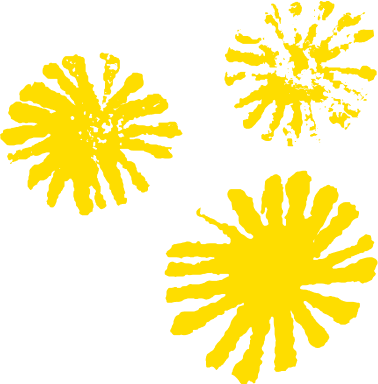What is Yoga?
Throughout history, yoga has evolved and diversified, giving rise to different schools and lineages, each emphasizing different aspects of the practice. From physical postures to breath control, meditation, and self-inquiry, yoga encompasses a wide range of practices that aim to cultivate physical, mental, and spiritual well-being.
As we delve into the multitude of scriptures and ancient texts, we find that yoga is not limited to a single definition or approach. It is a multifaceted and ever-evolving practice that offers something for everyone, regardless of their individual inclinations or spiritual beliefs.
In today’s world, yoga continues to captivate and inspire people from all walks of life. Its benefits extend beyond the physical realm, fostering mental clarity, emotional balance, and spiritual growth. By incorporating the wisdom and teachings from these scriptures into our understanding of yoga, we can deepen our practice and appreciation for this ancient discipline.
Definitions of Yog or Yoga:
According to the Bhagavad Gītā, the ancient Hindu scripture, yoga is a path to equanimity and skill in action. Bhagvat Gita states that performing actions while established in yoga means abandoning attachment and being equanimous in success and failure.
Patanjali defines yoga as the suppression of the activities of the mind. Yoga is samādhi, a quality of the mind present in all states. Yoga is the cessation of the fluctuations of the mind.
According to the Pañcārthabhāṣya yoga is defined as the union between oneself and the divine.
Liṅgapurāṇa describes yoga as the state of nirvāṇa, which refers to the condition of Śiva. In essence, the term ‘yoga’ represents the ultimate goal of achieving spiritual liberation, where one reaches a state of Supreme Consciousness and enters into a state of profound unity with the divine.
Mālinīvijayottara defines that it is the union of one thing with another – specifically, the union of the individual self with the universal consciousness.
In the ancient Hindu text Vimānārcanākalpa, it is explained that yoga represents the merging of the individual self with the supreme self. This union is at the core of the practice and helps individuals achieve a state of peace and unity within themselves and with the world around them.
In the Yoga Vasistha, yoga is portrayed as a means to achieve liberation (moksha) by transcending the illusions of the material world and realizing the ultimate truth. It describes yoga as a practice that involves disciplining the mind, controlling the senses, and cultivating self-awareness.
The text highlights the importance of purifying and balancing the body and mind through various practices such as asanas (physical postures), pranayama (breath control), mudras (energetic gestures), and bandhas (energy locks). These practices aim to awaken and direct the flow of vital energy (prana) within the body, leading to increased vitality, health, and spiritual awakening.
International Yoga Day 2024: Yoga for Women Empowerment
The International Day of Yoga is a day in recognition of Yoga, that is celebrated across the world annually on June 21, following its adoption by the United Nations in 2014. As Yoga exercises have shown immense benefits for physical and mental well-being, it was considered important by the UN to globally promote this wellness practice, which originated in ancient India.
The theme for the International Yoga Day 2024 “Yoga for Women Empowerment”.
Yoga is a comprehensive instrument for empowering women, encompassing their physical, mental, emotional, social, and spiritual well-being. Empowered women take on roles as leaders, educators, and advocates for change, promoting inclusivity, diversity, and empowerment across society.
History of International Yoga Day:
In September 2014, India’s Prime Minister Narendra Modi, in his UN address, suggested an annual Day of Yoga on June 21, as it is the longest day of the year in the Northern Hemisphere and shares a special significance in many parts of the world. Following the initial proposal, the UN adopted the draft resolution, entitled “Day of Yoga”, in 2014. The consultations were convened by the delegation of India. In 2015, the Reserve Bank of India issued a 10-rupee commemorative coin to mark the International Day of Yoga. In April 2017, the UN Postal Administration (UNPA) issued 10 stamps on Asanas on a single sheet to mark International Day of Yoga.
When proposing 21 June as the date, Modi said that the date was the longest day of the year in the northern hemisphere (shortest in the southern hemisphere), having special significance in many parts of the world. In the Indian calendars, the summer solstice marks the transition to Dakshinayana. The second full moon after summer solstice is known as Guru Poornima. In Hindu mythology, Shiva, the first yogi (Adi Yogi), is said to have begun imparting the knowledge of yoga to the rest of mankind on this day and became the first guru (Adi Guru).
The first International Day of Yoga was observed around the world on 21 June 2015. The Ministry of AYUSH made the necessary arrangements in India. 35,985 people, including PM Modi and dignitaries from 84 nations, performed 21 asanas (yoga postures) for 35 minutes at Rajpath in New Delhi, becoming the largest yoga class ever held, and with the largest number—84—of participating nations. Similar days have been held in cities in India and around the world each year since then.
UN Declaration
On 11 December 2014, India’s Permanent Representative Asoke Mukherji introduced the draft resolution in the United Nations General Assembly. The draft text received broad support from 177 Member States who sponsored the text, which was adopted without a vote. This initiative found support from many global leaders. A total of 177 nations co-sponsored the resolution, which is the highest number of cosponsors ever for any UNGA resolution of such nature.
Yoga App:
In 2021, the World Health Organization in collaboration with the Government of India, is launching WHO mYoga – a yoga app to help people stay active and healthy. The app is safe and secure and does not collect any data from users. It is available for free download on Android devices, and Apple devices.
The app contains a collection of videos and audio files to teach and accompany yoga practice and is an easy-to-use and free tool for both people who are trying yoga for the first time or those who already practice yoga regularly. No special equipment is needed, and users can learn or practice for between 3 to 45 minutes, so even busy people can use it to get active.
We will be celebrating International Yoga Day at IACRF Hall on 20th June with the senior group and 22nd June with the community members. The theme for International Yoga Day 2024, of Empowering Women resonates with the Asian Pacific Community in Action’s mission. We at Asian Pacific Community in Action, conduct health screening events and create awareness and provide health education to prevent chronic disease including hypertension, diabetes, hepatitis and promote healthy lifestyle and vaccination with a focus to empower the community. We also promote specific ethnicity disaggregated data that differentiate the high and low prevalence among different ethnicities that are lacking at present in the country and in the state. Asian Pacific Community in Action, in collaboration with NYU Center for the Study of Asian American Health, are conducting a Community Health Resources and Need Assessment (CHRNA).





